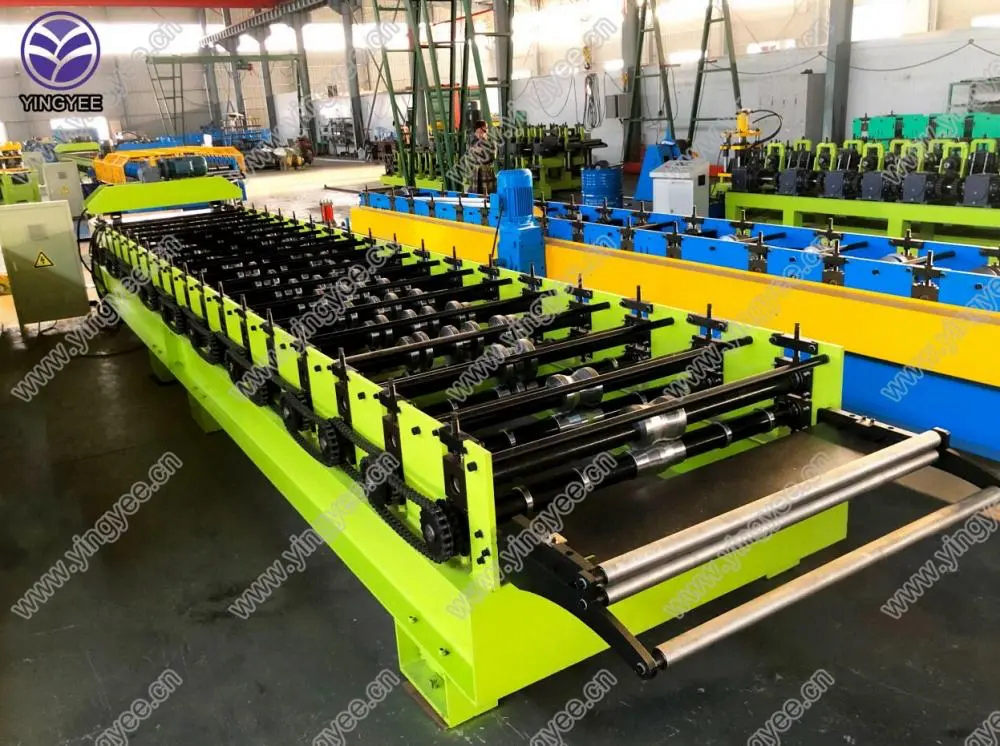
Understanding Changeable U Purlin Roll Forming Machines
In the modern landscape of construction and manufacturing, the demand for efficient and versatile machinery has never been higher. Among such innovations, the Changeable U Purlin Roll Forming Machine stands out as a crucial player in the production of structural components. This article delves into what these machines are, their significance in various industries, and how they operate.
What is a Changeable U Purlin Roll Forming Machine?
A Changeable U Purlin Roll Forming Machine is a sophisticated piece of equipment designed to manufacture U-shaped purlins—thin-walled structural components that provide support in various building applications. The “changeable” aspect refers to the machine's ability to produce purlins of different sizes and thicknesses without the need for extensive modifications. This flexibility is essential for manufacturers who need to cater to diverse client requirements or adapt to varying construction standards.
The Significance of U Purlins
U purlins are widely used in construction, particularly in metal building structures where they form the horizontal supports that connect to the vertical columns. Their lightweight nature combined with strength makes them ideal for supporting roofing and wall sheeting. Industries ranging from agricultural facilities, warehouses, and commercial buildings benefit from the structural integrity that U purlins provide.
How Does the Machine Work?
The operation of a Changeable U Purlin Roll Forming Machine involves several key steps
1. Material Feed The process begins with the feeding of flat metal strips—often steel or aluminum—into the machine. The material is usually galvanized to enhance corrosion resistance.
2. Roll Forming Once fed into the machine, the flat metal passes through a series of rolls. Each roll gradually bends and shapes the material into the desired U-profile. This process is called roll forming, which is energy-efficient and requires less material compared to traditional forming methods.

3. Cutting After the material has been shaped, the formed length of U purlins is cut to specification, ensuring uniformity in the production process.
4. Automated Controls Modern machines are equipped with computerized controls that allow operators to easily adjust dimensions, changing the profile of the U purlin as necessary. This feature significantly reduces downtime and increases productivity.
Benefits of Changeable U Purlin Roll Forming Machines
1. Versatility The ability to produce various sizes and thicknesses makes these machines suitable for different projects. Manufacturers can quickly switch between profiles, responding to market demands effectively.
2. Cost Efficiency By minimizing material waste and optimizing production speed, these machines significantly reduce manufacturing costs. Moreover, their ability to produce custom profiles in short runs is an economic boon for manufacturers who may not have the volume to justify dedicated lines for each profile type.
3. Quality Assurance Precision engineering and automation results in high-quality finished products. Consistent thickness and dimensional accuracy ensure that the U purlins meet industry standards, which is vital for structural integrity.
4. Enhanced Productivity Automated systems reduce the need for manual labor, allowing for quicker production times and freeing workers to focus on other critical tasks.
Conclusion
Changeable U Purlin Roll Forming Machines are revolutionizing the way structural components are produced in the construction industry. Their versatility, efficiency, and ability to produce high-quality products make them indispensable for modern manufacturers. As construction demands evolve, these machines will continue to play a pivotal role in shaping the future of building design and manufacturing. Embracing these advancements not only enhances productivity but also contributes to the overall sustainability of construction practices by reducing material waste and improving resource utilization. Whether dealing with commercial, industrial, or agricultural applications, understanding and utilizing these machines holds the key to success in an ever-competitive market.